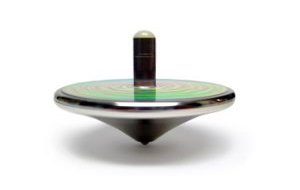


O’Neil is right on at least one count: exchange-traded fund (ETF) data certainly show stocks on the rise. While global ETF and exchange-traded product (ETP) assets grew to $1.95 trillion in 2012, data from ETF Global Insight report also show that equity-focused ETFs clocked record growth during the year, pulling in $167.3 billion, a massive increase of 84.5% over 2011. The most popular products were focused on U.S. and North American equities, followed closely by emerging market equities. By contrast, flows into fixed income ETFs, while still healthy, didn’t quite hit the highs equities did: fixed income ETFs added $62.9 billion in net new assets, an increase of $17.5 billion, or 38.5%, on 2011 levels.
Does all this a rotation make? Possibly. But on the pension side of the industry that kind of turnaround from bonds into stocks isn’t going to happen fast. Plan sponsors are understandably gun shy about equities, having been twice burned in the same decade: once in 2001 and again in 2008.
As a result, many have already turned down the derisking road, buying up bonds and hard assets; focusing on paying out liabilities for the long-term. Others are merely waiting to make the move. Right now, at least, there is little appetite for fickle stocks and the name of the game is, instead, immunization.
But like any long-term relationship, the door could still be open, especially now that sovereign risk is at all time highs making good bonds harder to come by. Perhaps the biggest sign of real change in asset allocation (and the potential for a great rotation) will come as we watch how institutions—and pension funds in particular —use ETFs. Stay tuned. In the meantime, here are a few other interesting statistics from the latest ETF Global Insight report.
- ETF and ETP assets increased by 27.6% from $1.53 trillion to $1.95 trillion during 2012.
- The 10-year compounded annual growth rate of global ETF and ETP assets at the end of 2012 was 29.6%.
- There are currently 4,731 ETFs and ETPs with 9,710 listings, assets of $1.95 trillion, from 208 providers on 56 exchanges.
- The largest provider is iShares with $760 billion assets and a 39% market share; SPDR ETFs is second with $337 billion and 17.3% market share, followed by Vanguard with $246 billion and 12.6% market share.
